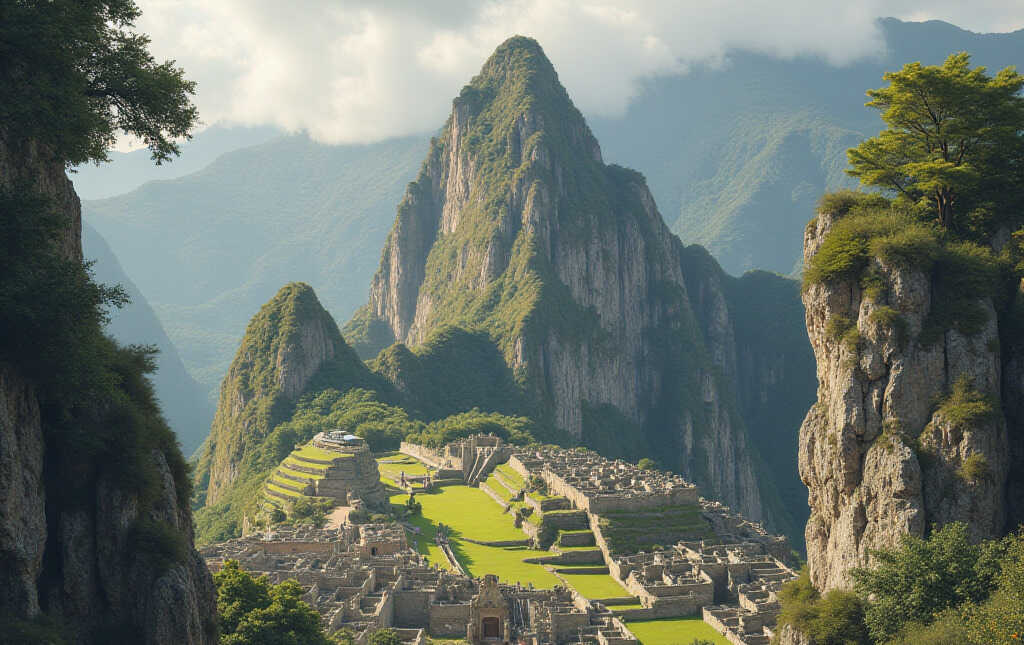From historical wonders lost into oblivion to breathtaking contemporary structures that still evoke inspiration, the seven wonders of the word exemplify the height of human creativity, artistry, and architectural brilliance. This collection of extraordinary locations is divided into two groups: the seven wonders of the ancient world, as defined by classical academics, and the new seven wonders of the world, chosen via an international poll in the 21st century.
Let’s explore both categories of marvels – ancient and modern – to recognize their historical, cultural, and artistic importance.
The seven wonders of the ancient world
The seven wonders of the ancient world were assembled in the second century BC and feature architectural and artistic marvels from classical antiquity. Although the majority have vanished, they still pique people’s interest.

- The Great pyramid of Giza, Egypt
The Great pyramid of Giza – built around 2600 BC remains the only ancient wonder that is standing today. Constructed as a burial site for Pharaoh Khufu, it previously reached 146.5 metres in height, being the tallest human made structure on the planet for almost 4000 years.

- The hanging gardens of babylon
Reportedly constructed around 600 BC by king Nebuchadnezzar || For his nostalgic wife, the hanging gardens of Babylon were a verdant heaven situated in the heart of the desert. While their precise location is still unknown and some historians doubt their existence – the gardens are cherished as an emblem of beauty and affection, reportedly overflowing with vibrant greenery and flowing terraces.

- The Statue of Zeus at Olympia
Constructed in 432 BC by the sculptor Phidias – the Statue of Zeus was a 12 meter high-work-of-art located in the temple of Zeus in Olympia, Greece. Crafted from ivory and gold, the seated statue of Zeus was intended to inspire wonder and respect among devotees.

- The temple of Artemis at Ephesus
Situated in present day Turkey – the temple of artemis was an impressive structure devoted to the Greek goddess of the Hunt. The temple was famous for its size and elaborate design when it was constructed in 550 BC. Unfortunately, it was consumed by flames’ in 356 BC by a person named Herostratus who desired fame. Nonetheless, it was reconstructed several times and constructed a masterpiece of classic architecture.

- The Mausoleum at Halicarnassus
The magnificent mausoleum was constructed between 353 and 350 BC in Halicarnassus (currently in bodrum, Turkey) for mausolus, a Persian governor. The 41 meter tall Mausoleum at Halicarnassus, which combined Greek, Egypt, and Lycian architectural traditions, was commissioned by his distraught wife, Artemisia ||. Before suffering damage from a string of earthquakes, it survived for more than 1500 years.

- The Colossus of Rhodes
Built between 292 and 280 BC – the colossus of rhodes was an enormous bronze figure of the sun deity Helios. Rising to about 33 m in height, it commemorated the city’s triumph against invaders. Sadly, it was devastated by an earthquake merely 54 years post completion, yet it survives as one of the most renowned statues in ancient history.

- The lighthouse of Alexandria
Commonly referred to as the Pharos of Alexandria – this historical lighthouse was constructed in 280 BC on Egypt’s pharaohs Island. Projected to stand between 115 and 145 meters in height, it directed vessels safely into the harbor of Alexandria using sunlight reflected by mirrors during daylight and firelight at night. Unfortunately, it was destroyed by an earthquakes centuries ago, vanishing completely at the end of the 15th century.
The new seven wonders of the world
Acknowledging the importance of honoring modern human accomplishments, the new seven wonders of the world were selected in 2007 after a worldwide vote conducted by the New7Wonders foundation. More than 100 million votes were submitted to choose these livable, approachable wonders of contemporary architecture and culture.
- The Great Wall of China
The Great Wall of China consists of numerous walls’ and defences that stretches 20,000 km and was constructed by multiple Chinese dynasties starting in the third century BC. Initially built to guard against invasions, the wall also represents the lasting strength and unity of the Chinese population. Its size, elaborate watchtowers, and breathtaking mountain views still astound tourists today
- The Taj mahal, India
Constructed in 1632 by Mughal Empire Shah Jahan to honour his beloved wife Mumtaz mahal – the Taj mahal in Agra, India, is a flawless white marble tomb and a symbol of everlasting love. Its balanced design, gardens inspired by Persian style, and marble that alters hue with the time of day render it one of the most photographed and adored landmarks globally.
- Petra, Jordan
Nestled among the rough cliffs of southern Jordan – Petra is a city shaped from rose-red stone more than 2000 years ago by the Nabateans. Prior to its fall to the Romans and subsequent abandonment, Petra, which is famous for its spectacular treasury, was a significant commerce hub. The city was rediscovered in 1812 and now attracts wide range of tourists’ who are enthralled by its architecture and enigmatic history
- The Colosseum, Italy
The Colosseum in Rome – referred to as the Flavian Amphitheater, was constructed between AD 70 and 80 and had a capacity of more than 50,000 spectators’. It held gladiatorial contests, public executions, and naval simulations. Although it has faced centuries of destruction from earthquakes and theft, it stands as a symbol of Roman in engineering and is among Italy’s most frequented historical sites
- Christ the Redeemer, Brazil
Standing majestically atop Corcovado Mountain in Rio de Janeiro – Christ the Redeemer is a 30 meter-tall-art Deco monument of Jesus Christ with arms outstretched, signifying peace and welcoming. Constructed in 1931, the statue serves as a national emblem of Brazil and a representation of faith and solidarity
- Chichen Itza, Mexico
Constructed by the ancient Maya Civilization – Chichen Itza consists of pyramids, temples and plazas’ that flourished more than 1,500 years ago in the Yucatan Peninsula. El Castillo (the temple of Kukulkan), its most well known building, has 355 steps, one for every year. The location embodies a fusion of Mesoamerican architecture, religion and astronomy
- Machu Picchu, Peru
Perched high in the Andes Mountains’, Machu Picchu is a 15th-century Inca fortress believed to have served as a royal gateway. Constructed at a height of more than 2,000 meters – the city is a feat of engineering with stone buildings’ that blend in perfectly with the surrounding mountains. Machu Picchu stayed concealed from the world until its rediscovery in 1911 and is currently a UNESCO World Heritage site.
From the remarkable accomplishments of ancient construction to the architectural ingenuity of contemporary times – the Seven Wonders of the World continue to captivate adventurers’, historians and visionaries alike. They are more than simply physical monuments; they are living examples of the passion, tenacity, and creativity of people throughout the ages.
These wonders’ serve as everlasting reminders of what humanity is capable of and what has to be conserved for the generations to come – whether they are buried in the sands of history or rising prominently in busy metropolises’.





